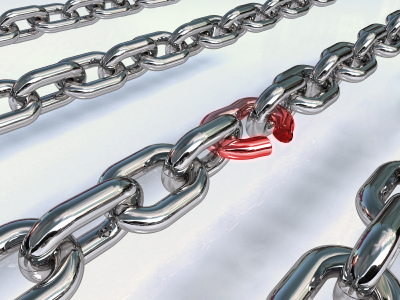 In a previous post I pointed out the importance of transparency in supply chains. This current post is looking at supply chain risk in the light of the Europe wide ‘Horse meat’ scandal. It remains to be said that the results found so far not only suggest that undeclared horse meat found its way into cheap and low quality, possibly prepared meals. But that there is a much more general, and widely spread problem with meats of different types ending undeclared on the shelves for consumption.
In a previous post I pointed out the importance of transparency in supply chains. This current post is looking at supply chain risk in the light of the Europe wide ‘Horse meat’ scandal. It remains to be said that the results found so far not only suggest that undeclared horse meat found its way into cheap and low quality, possibly prepared meals. But that there is a much more general, and widely spread problem with meats of different types ending undeclared on the shelves for consumption.
A recent The Times supplement made a wide range of data available to a wider public, and it is said supplement that I take as a basis for the current article, together with the report ‘Building Resilience in Supply Chains’ published in January 2013 by the World Economic Forum (WEF).
71% of mid-sized manufacturers have suffered disruption due to product quality incidents. Across all sizes and industries, 73% had suffered significant disruption, of which 39% was below level 1 among the secondary members of the supply chain and beyond.
The key argument delivered in both, the report as well as in the Times’ supplement, is the following: Supply chains have been very, very well optimised in the past 3 decades. At the same time, and especially for European and US companies, the chain covers huge geographic distances, and its depth a considerable number of levels. This is particularly applicable to apparel brands and manufacturers.
As a consequence of an ongoing trend to make the supply chains ever more lean, cost and time efficient, technology and skills have reached a peak. And: most supply chains are well prepared for what a company would consider the most probable of risks: A fire in a single factory; a qualitatively bad batch of products; or even the sinking of a container freight ship.
70% of companies believe climate change could hit revenue.
But, and this is an important ‘but’, few of any supply chains are built to a) deal with less probable risks, often denominated as ‘crisis’; and b) risks that affect a whole region. Example of these would be; the Arabic Spring (still ongoing), the East Japan Earth quake and tsunami in 2011; the flooding in Thailand which paralaysed 1000s of factory.
81% of procurement professionals planned to ask suppliers for more information on sustainability in 2012.
Another risk, seldom talked about, it what is happening at suppliers either at the back of ongoing rationalisations: Hornby, one of the renowned British toy makers, had to experience this when their supply didn’t arrive in time for Christmas, result of a rationalisation programme gone awry.
In that sense, the horse meat scandal for British food retailers is what the Greenpeace Detox campaign is for many large, and rather well known fashion brands. Both events are, at the bottom line, an outgrowth of hyper-optimised supply chains where price is the key optimisation variable. And for both scandals, the option to either prepare or else mitigate was available. For the horse meat scandals – and meat eating preferences appart – a retailer
- either ignores what is happening at their suppliers in detail, but in such case must no doubt prepare for all eventualities (press, change in buying patterns, questions by law enforcement)
- or else is aware of their shortcomings in controlling what is happening, and working changing that.
The interesting thing about the most recent scandals is however the fact that many companies have little or no ideas of the dangers they might be facing. In other words, it’s a double dimension ignorance: one of the actual facts, i.e. that ‘stuff’ is not happening how it should be; and second, there is a lack of awareness that there will invariably be some things that cannot be known, even if supremely well prepared. The key thing hence is to know as much as possible; prepare for the issues that may arise within these scenarios; and finally to prepare how to react for ‘the unknown’, pro-actively.
Video: Reducing Cost and Risk in your Supply Chain. Roundtable with Joanna Santander, Carbon Reduction Services at Achilles; Nigel McKay, Head of Procurement & Supply Chain at Lend Lease; Dean Pearmain, Group Buying Manager at Tesco; and Martin Chilcott, CEO at 2degrees.
So, while knowledge, as previously pointed out, is one half of the equation, what is the other half?
It is:
a) an awareness that you can’t, and won’t, know it all.
b) the cost to know is a short-termed investment, as opposed to the long running benefits of knowing.
c) that scenarios – as improbable as they may sometimes seem – are essential to know where you are know, but also where you could, or not, be going as a company, and what could all go (fundamentally) wrong.
d) only based on above scenarios, can resilience then be built into the system on all levels, notably at a strategic and communication level.
e) resilience and hyper-lean supply chain may not always coincide. Chances are that the organisation will have to partially unlearn to ‘over optimise’, for its own long-term benefit and survival.
Finally, that risk management, sustainability, and bottom line benefits are tightly linked together became apparent in the round table (video; right) on Reducing Cost and Risk in the Supply Chain.

